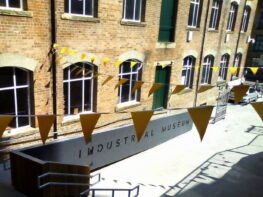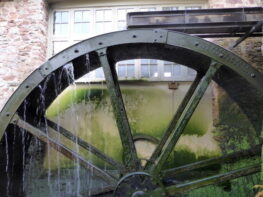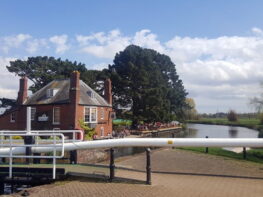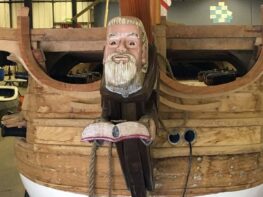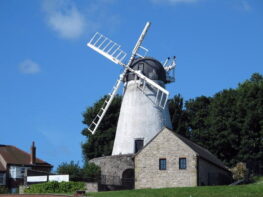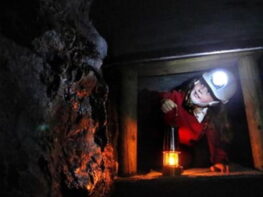
The Dean Heritage Centre tells the social and industrial history of the Forest of Dean.
There is a beam engine, free mine and charcoal burning!
The Dean Heritage Centre comprises of 5 galleries explaining the history of the Forest of Dean from the earliest geological and fossil records to the present day. They display a wide variety of artefacts from industries such as coal and iron mining, forestry, timber, stone working and clock making, that have shaped the history, landscape and culture of the Forest.
Among the more noteworthy artefacts in the museum’s collection are:
- an 1830s Lightmoor Colliery beam engine,
- Thomas Sopwith’s 1838 geological model of the Dean Forest, and
- the Voyce collection of 18th and 19th century longcase clocks.
Dean Heritage Centre also has a millpond and waterwheel, forester’s cottage with garden and animals, art and craft exhibitions and workshops, and Gruffalo trails around the surrounding woodland. In addition, there are picnic tables, barbecue hearths, an adventure playground, a gift shop selling local produce and the Heritage Kitchen – a restaurant providing home-made food.
The 5 wooded acres also feature Harvey’s Folly, a replica of a freemine entrance, built for the centre by retired freeminer Dave Harvey. The right to mine for coal is believed to have been first granted by Edward II, to any man born within the Forest of Dean’s traditional boundaries, (known as the Hundred of St Briavels) and who has worked underground for a year and a day.
Also on the site is the charcoal burners’ camp, in a forest clearing with a stone-and-turf-built hut constructed as they have been for centuries.
The Heritage Centre maintains the tradition of charcoal burning by conducting twice-yearly charcoal burns.
These are built in the traditional turf and earth method, whereby the wood is stacked tightly together in a dome, then covered in turf and earth to starve the fire of oxygen, ensuring that the wood dries out at a high temperature, but not burned. The charcoal produced would in the past have been used to achieve the high temperatures necessary to smelt the iron ore mined in the Forest. Nowadays, however, it is sold mainly for barbecues.
Check out their website for more information – HERE!

The Dean Heritage Centre tells the social and industrial history of the Forest of Dean.
There is a beam engine, free mine and charcoal burning!
The Dean Heritage Centre comprises of 5 galleries explaining the history of the Forest of Dean from the earliest geological and fossil records to the present day. They display a wide variety of artefacts from industries such as coal and iron mining, forestry, timber, stone working and clock making, that have shaped the history, landscape and culture of the Forest.
Among the more noteworthy artefacts in the museum’s collection are:
- an 1830s Lightmoor Colliery beam engine,
- Thomas Sopwith’s 1838 geological model of the Dean Forest, and
- the Voyce collection of 18th and 19th century longcase clocks.
Dean Heritage Centre also has a millpond and waterwheel, forester’s cottage with garden and animals, art and craft exhibitions and workshops, and Gruffalo trails around the surrounding woodland. In addition, there are picnic tables, barbecue hearths, an adventure playground, a gift shop selling local produce and the Heritage Kitchen – a restaurant providing home-made food.
The 5 wooded acres also feature Harvey’s Folly, a replica of a freemine entrance, built for the centre by retired freeminer Dave Harvey. The right to mine for coal is believed to have been first granted by Edward II, to any man born within the Forest of Dean’s traditional boundaries, (known as the Hundred of St Briavels) and who has worked underground for a year and a day.
Also on the site is the charcoal burners’ camp, in a forest clearing with a stone-and-turf-built hut constructed as they have been for centuries.
The Heritage Centre maintains the tradition of charcoal burning by conducting twice-yearly charcoal burns.
These are built in the traditional turf and earth method, whereby the wood is stacked tightly together in a dome, then covered in turf and earth to starve the fire of oxygen, ensuring that the wood dries out at a high temperature, but not burned. The charcoal produced would in the past have been used to achieve the high temperatures necessary to smelt the iron ore mined in the Forest. Nowadays, however, it is sold mainly for barbecues.
Check out their website for more information – HERE!


